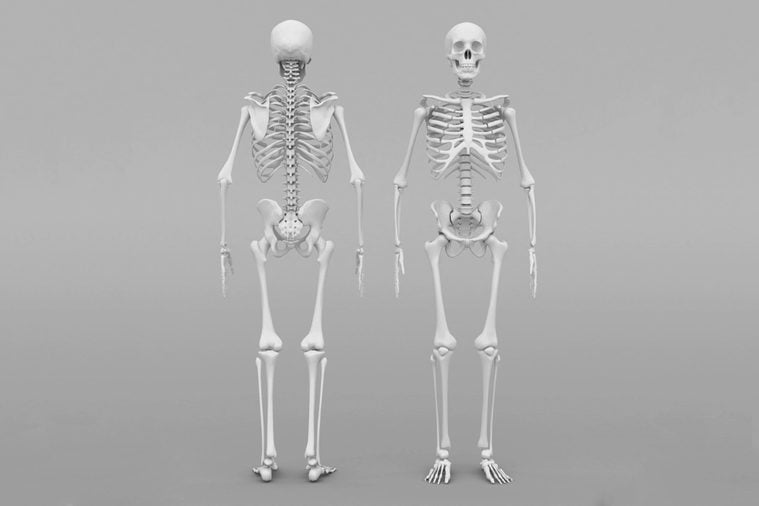This Is How Long Your Skeleton Takes to Regenerate Itself
Updated: Jan. 30, 2019
The bone cells in your body aren't the same ones you were born with; the body is constantly turning over new cells.
 You’re not the same person you were as a child. You’re not even the same person you were five years. And no, we don’t just mean your personality. While we’d love to start a never-ending debate over the definition of the “true self,” we’re here to talk about something a bit more objective: the cells in your body.
You’re not the same person you were as a child. You’re not even the same person you were five years. And no, we don’t just mean your personality. While we’d love to start a never-ending debate over the definition of the “true self,” we’re here to talk about something a bit more objective: the cells in your body.
You know how your fingernails and hair are constantly growing and replacing themselves? The same thing happens almost everywhere in your body. Your outer layer of skin sheds to make way for fresher skin, and inside your veins, blood cells turn over to make way or (literal) fresh blood. It’s probably no surprise that these types of cells are short-lived, but even some of the most seemingly permanent parts of your body replace themselves over time—including your bones. Learn about 30 simple things you can do daily to boost your bones.
Strong and solid as your bones might seem, the cells they’re made of won’t last a lifetime. Bones are masters at rebuilding themselves, which is why most broken bones can heal on their own with nothing more than a cast to guide them into the right shape.
Bones have special cells called osteoclasts whose job is to break down bone (even if it isn’t fractured) and send the minerals into the blood stream. This may sound intimidatingly like your bones are wearing away, but your body knows what it’s doing. As osteoclasts break down bone, osteoblasts build up new bone to replace the old. By the end of each year, about 10 percent of your entire adult skeleton will have been rebuilt through this process, according to a study in Endocrine Reviews. Don’t miss these other 15 incredible things your body does every minute.
We know what you’re thinking: If 10 percent of your bone breaks down every year, it must take about ten years to regenerate 100 percent of your skeleton. That would be a great guess, and it line up nicely with the medical myth that the human body’s cells are fully replaced every seven years, but the body is a bit more complex. That 10 percent is just an average—some bone grows faster than that, and some grows slower. While some parts of your bone will turn over quickly (osteoclasts live just two weeks or so), other parts will stick around for decades. In fact, most bone cells have a half-life of 25 years, and they could live as long as 50 years.
So before you get wrapped up in an identity crisis about the cells in your body disappearing on you, know that you can lose some hairs and you can cut your nails, but the bones of you aren’t going anywhere—at least not very soon and not all at once. Read on to discover these other 20 obscure facts you never knew about your own body.












